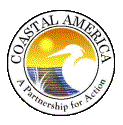

Sylvan Lake Restoration and Resilience Project
Project Purpose:
Avon and Bradley Beach share in the stewardship of this natural resource with their communities through the Sylvan Lake Commission. Both municipalities and the Commission support the implementation of a nature-based approach to restore the lake and improve water quality, habitat, public access and safety, aesthetics and the lake’s ability to increase climate resilience for both communities which suffered flooding from Superstorm Sandy from the lake. The municipalities and Commission seek to build on two Living Shoreline projects completed on the southeast and eastern side of the lake and make this a restoration and resiliency model for all Monmouth county coastal lakes.
Brief Description:
Sylvan Lake drains a 17 acre heavily developed watershed directly into the Atlantic Ocean. Over multiple decades, sedimentation has increased and natural freshwater inputs have declined turning it into essentially a treatment basin, with algae blooms and deteriorated water quality. Since the flooding in both towns from Hurricane Sandy, Sylvan Lake has suffered from increased climate impacts including sea level rise as well as extreme coastal and up-watershed storm events. These impacts further degrade the lake's natural functions, its ability to absorb the heavier storm water flows/surges and its overall value to the communities. The proposed innovative restoration approach of this project will include deepening the lake and beneficially using that dredged sediment as a resource to create climate resilient green infrastructure features. Sediment will be used to build a treatment wetland system with planted swales to handle storm water inputs on the western end of the lake. A manufactured treatment device and riparian restoration on public works property across Route 71/Main Street will add significant pre-treatment, with the removal of larger sediment particles and debris before it enters the Rt. 71 culvert and discharges to the created treatment wetlands. Additional nature-based techniques will utilize dredged sediments to create wetland benches and living shorelines along in both Avon and Bradley Beach and include planted stormwater swales to slow down and clean road runoff at road ends similar to the previously living shoreline constructed in Avon. The combination of green infrastructure with hardscaped benches and planted swales will increase storm surge protection while enhancing habitat and water quality. Wetland benches installed on the Bradley Beach shoreline in front of the existing deteriorated wooden bulkhead could prevent the need for removal and replacement. Vegetated berms planted with native pollinator plants and shrubs may also be designed for a strip along the shorelines behind the living shorelines, to increase wave attenuation and reduce roadway flooding impacts.
Resource Values/Project Outputs:
-
Enhanced storm surge resilience from up-watershed and the ocean
-
Improved water quality for fisheries and foraging local bald eagles and ospreys
-
Creation of new wetland habitat for fisheries, herptiles and avian species
-
Increased public aesthetics, recreational and passive access
-
Builds on successful living shoreline already constructed
-
Model for county-wide cost-effective lake restoration using nature-based approaches including innovative
beneficial use of dredge material for interior living shorelines Cost/Budget: $150,000
Schedule: Design and permitting Fall of 2022 with implementation in 2023 (Pending REPI funding)
Permit Status: Permit Application will be prepared following the completion of the design and REPI funding award
List of Partners: American Littoral Society, Bradley Beach, Avon-By-The-Sea, Sylvan Lake Commission, Monmouth University/Urban Coast Institute, Kean University, E&LP, SumCo Eco-Contracting
What is requested from the CWRP/Contribution: $25,000.00
Point of Contact: Capt. Al Modjeski, 732-589-5116, Alek@littoralsociety.org



